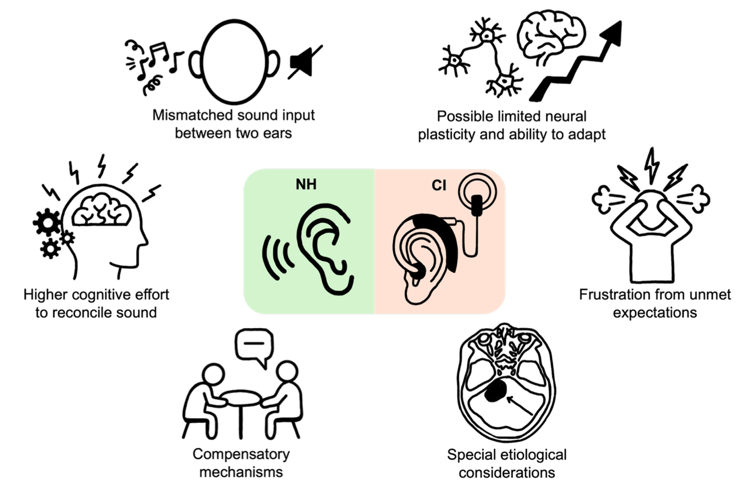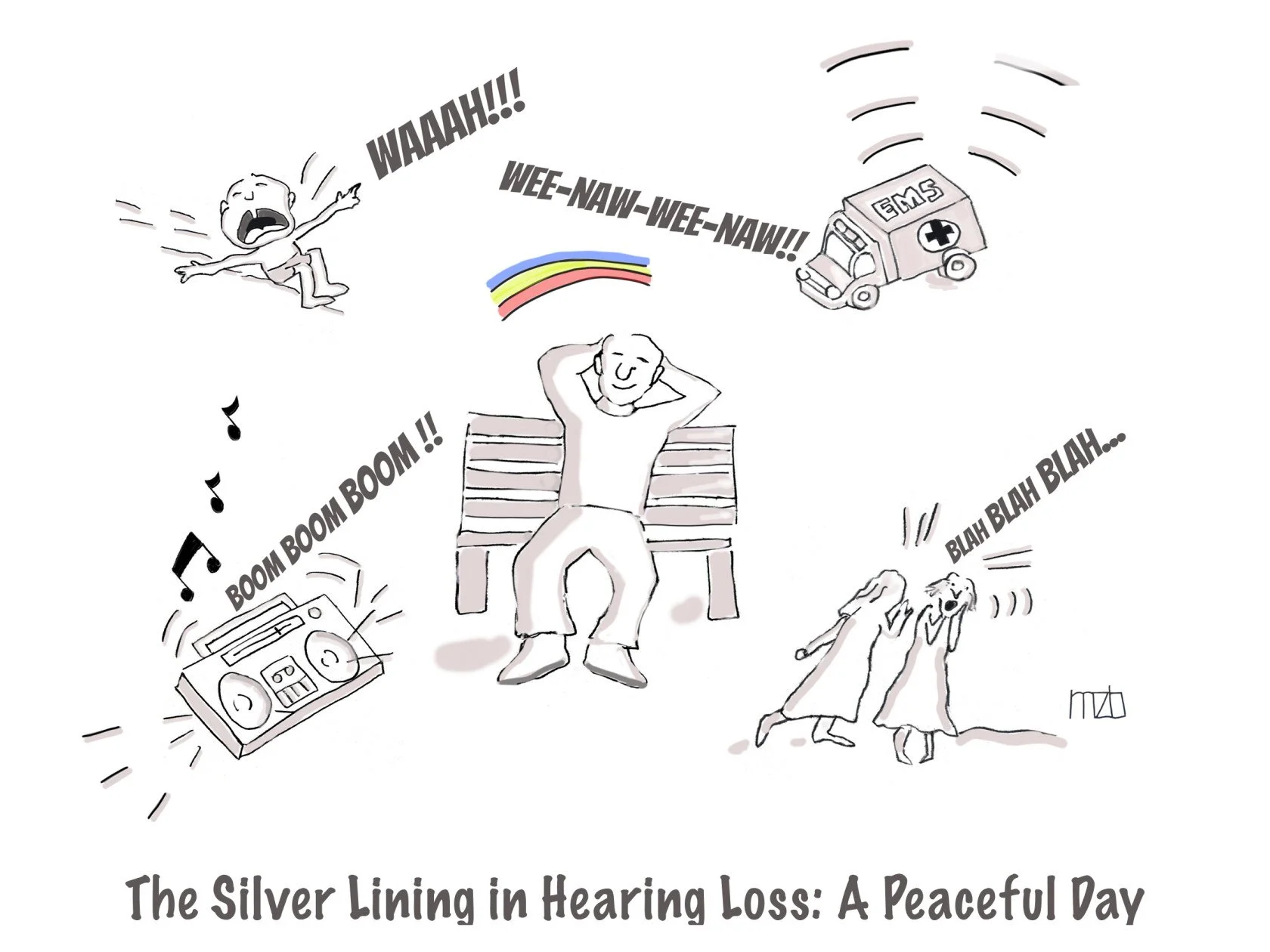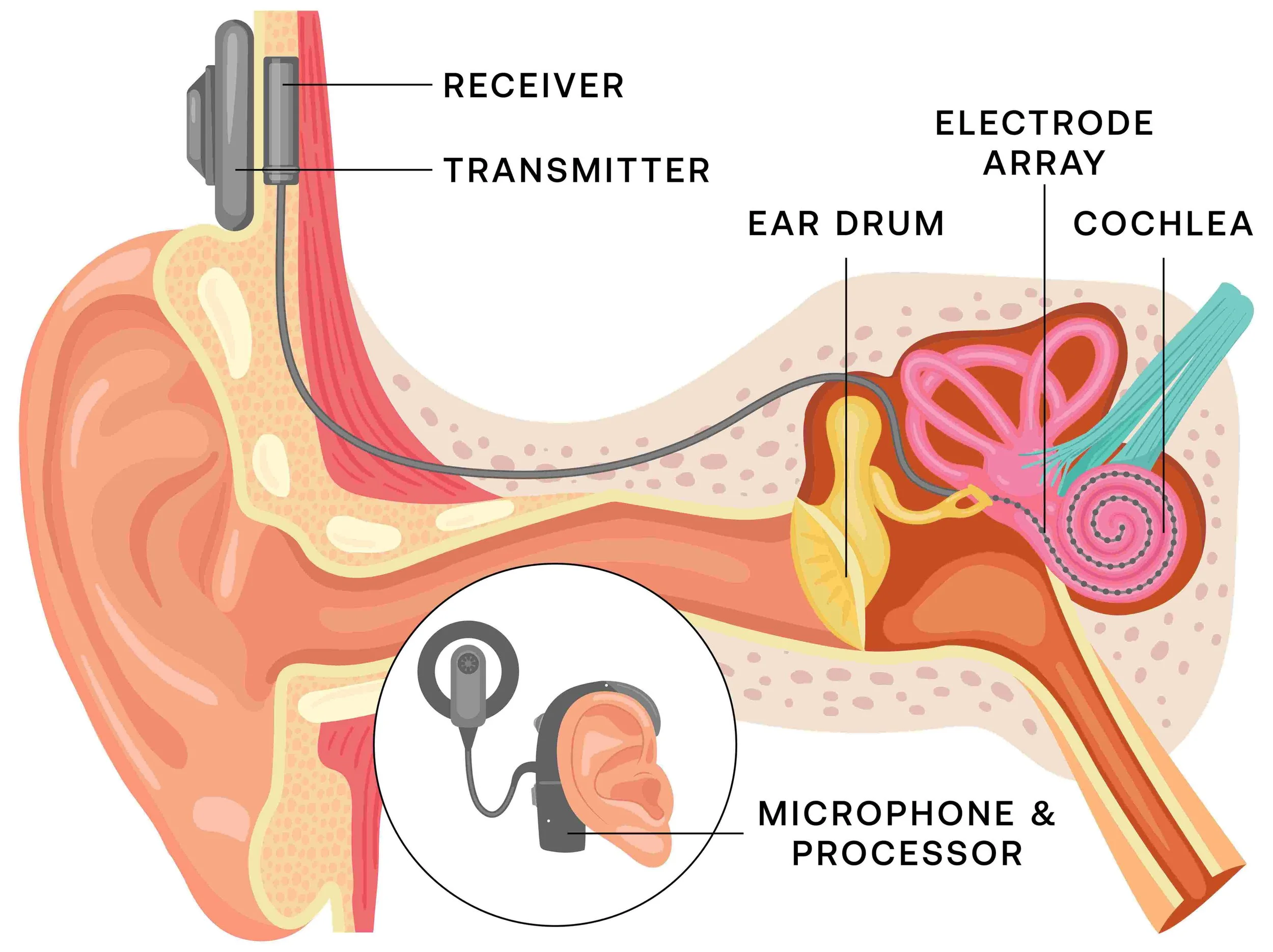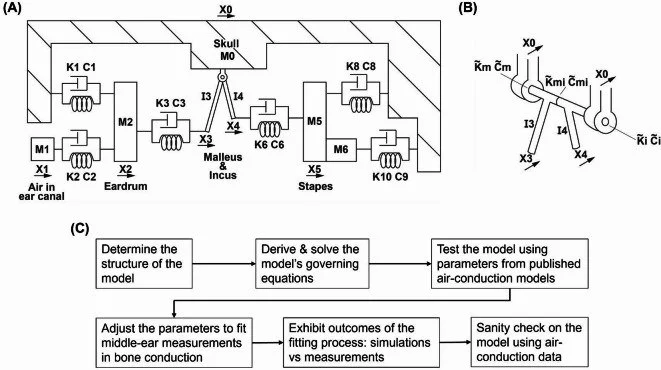Ver pagina en: English | Español
Hearing is complex, requiring a series of actions and reactions to work. The process involves many parts of the ear working together to convert sound waves into information the brain understands and interprets.
Sound waves enter the ear canal and travel toward our eardrums.
The sound waves cause the eardrum and bones in the middle ear to vibrate.
Tiny hair cells inside the cochlea, the sensory organ of the ear, convert these vibrations into electric impulses that are picked up by the auditory nerve.
At birth, each typical ear has about 12,000 sensory cells, called hair cells, which sit on a membrane that vibrates in response to incoming sound. Each frequency of a complex sound maximally vibrates the membrane at one location. Because of this mechanism, we hear different pitches within the sound. A louder sound increases the amplitude of the vibration, so we hear loudness.
Signals sent to the brain from auditory nerve are then interpreted as sounds.
Once the hair cells in the inner ear are damaged, permanent sensorineural hearing loss occurs.
Currently, sensorineural hearing loss cannot be restored in humans, but HHF’s researchers are working to better understand the mechanisms of hearing loss to find better treatments and cures.
More Resources
Hearing Health Foundation (HHF) is currently accepting applications for 2026–2027 awards through our Emerging Research Grants program.
Many single-sided deafness patients perform perfectly on standard speech-in-quiet tests due to their healthy ear, a “ceiling effect” that masks the real-world challenges they face. We propose using more sensitive metrics that assess sound quality and music perception.
As one who inhabits the worlds of both hearing and deafness, I am amazed by what you likely take for granted—the gift of hearing. And I experience the benefits, the misfortunes, and the humor of not hearing.
Our mission to fund innovative, groundbreaking hearing and balance science is only possible because of you. We are grateful for the support of our community.
The legacy gift from the late Shirley Jean Lane launches the next phase for HHF’s planned giving efforts: a new matching challenge to inspire legacy commitments from our community.
Whether you’re donating through your IRA, gifting appreciated stock, or using a donor-advised fund, your contribution to Hearing Health Foundation can make a meaningful difference.
Cochlear implants work differently from hearing aids. Instead of making sounds louder, they bypass the damaged parts of the inner ear and send signals directly to the brain, allowing individuals to perceive sound more clearly.
As we observe World Alzheimer’s Month each September, it’s a timely reminder that protecting our brain health starts long before memory problems arise.
This new computer model can serve as the bedrock not only to better understand how the middle ear vibrates during bone conduction but also to develop new diagnostics for middle ear conditions and inform the design of novel hearing devices.













My area of study is auditory neuroscience, and I’m especially passionate about how neuroscience can reveal the underlying mechanisms behind why hearing outcomes vary so much from person to person.